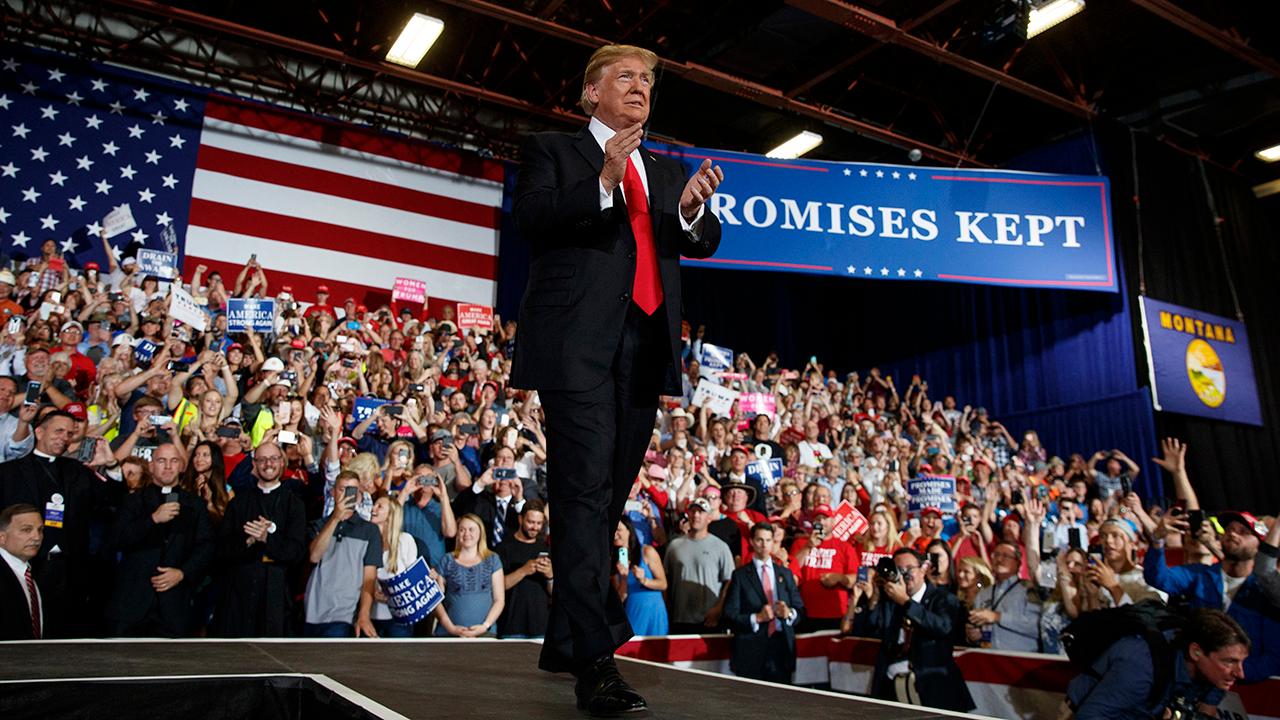Trump proposes second tax cut ahead of midterms. Can he do it?
Although Congress won’t return to session until after the November midterms, President Trump is promising a 10 percent tax cut to middle-class Americans less than two weeks ahead elections that could see Republicans lose control of the House.
“Part of why the president would like to cut taxes on the middle class is because it has gone so well,” Kellyanne Conway, counselor to the president, said on Wednesday during an interview with FOX Business’ Maria Bartiromo. “He sees the fruits of that Tax Cuts and Jobs Act, which passed last December without a single Democratic vote.”
Conway suggested that Democrats were languishing in the polls -- particularly in battleground states -- because they hadn’t voted for the tax cuts last year. (Most analysts are predicting the Democrats could flip the House on Nov. 6, with FiveThirtyEight favoring their chances at about 84.6 percent). Those same tax cuts, she said, were responsible for bringing 20,000 Apple jobs to the U.S. and giving 8 million Americans some type of bonus or raise.
For months, Republicans have promised to move forward with a second round of tax cuts. While campaigning for Texas Sen. Ted Cruz at a rally in Houston, Trump said Republicans were working to pass a 10 percent tax cut that had been in the works for “a few months.”
“We’re going to be putting in a 10 percent tax cut for middle-income families. It’s going to be put in next week, 10 percent tax cut,” he said on Monday. “Kevin Brady is working on it. We’ve been working on it for a few months.”
Currently, Brady, the chair of the House Ways and Means Committee, and National Economic Council Adviser Larry Kudlow are trying to figure out how to “make this go through the process,” according to Conway.
While the president will not sign an executive order to pass the tax cuts, she did not rule out the possibility that some type of legislative would be put forward before Nov. 6.
“That’s up to the chairman of House Ways and Means Committee himself,” she said. “Obviously, there’s no executive order designed to lower these tax burdens.”
Last week, the Treasury Department revealed the U.S. deficit had skyrocketed to $779 billion -- a six-year high and nearly 17 percent increase year-over-year from $666 billion in 2017. Some experts attributed that hike to Trump’s tax cuts, which they said cost the federal government $200 billion in revenue.




















